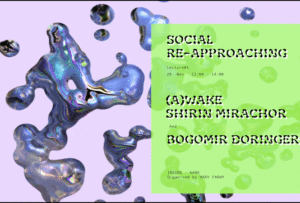Rules to Remember When Living in a Sober Living Home
Content
For over 20 years Dr. Umhau was a senior clinical investigator at the National Institute on Alcohol Abuse and Alcoholism of the National Institutes of Health (NIH). A staff member will be in touch with you shortly to provide more information. Lack of administrative attention suggests that the facility may not be well-run or legitimate, which could put your sobriety at risk. More than just Sober Living, we are committed to providing a safe community with accountability and connection. Upon eviction, former residents are not allowed on the premises of any 12 Step Education locations. Use or possession of alcohol or illegal substances in or on 12 Step properties will be grounds for being banned permanently from all locations.
- The residents are not allowed to bring alcohol or drugs in the sober living houses.
- While completing a substance abuse rehab program before moving in may not be required, it can help individuals to stay sober.
- It’s also important not to leave any dishes or clothes in the sink or on a countertop when you’re done using them because it will be someone else’s responsibility if you don’t clean up after yourself.
- Like some other sober living homes, the Perry House reportedly enforces a 100 percent drug-free policy.
Upon successfully completing an addiction recovery program, you may be given the option of transitioning out of rehab into a sober living house. This transition is designed to ease you back into normal society while reinforcing the skills that you learned in recovery to overcome the temptation to use drugs or alcohol again. Sober living houses, like halfway houses, maintain a strict Selecting the Most Suitable Sober House for Addiction Recovery abstinence policy which may be enforced with drug testing. Additionally, a sober living home may offer resources like career support, housing assistance and so forth, but each sober living home will differ in its requirements. Halfway houses have rules to enforce the sober environment of the home. A strict abstinence policy is central to the policies of all halfway houses.
Other Sober House Rules
Sober living homes provide an excellent transitional living situation after recovering addicts complete an inpatient rehab program or while continuing to attend outpatient treatment. These recovery homes help recovering addicts get back into the groove of independent living as they transition from an addiction treatment program back to the real world. Sober living home programs offer recovering addicts a drug-free living situation in a supportive environment.
- Since private organizations can run sober living homes, there is a risk that some sober houses aren’t run as well as others.
- View our editorial content guidelines to learn how we create helpful content with integrity and compassion.
- We are committed to helping residents build new futures for themselves as well.
- This is the biggest difference compared to the mandatory in-house living of inpatient treatment centers.
- Not only will you be expected to assist others in their recovery; if you are a resident in a sober living facility, you will be expected to participate fully in your own treatment.
- As we’ve said many times already, there’s no one answer to, “How do sober living homes work?
Due to a lack of uniform regulation and licensing, some homes are operated by profit-driven individuals who allow drugs and a host of other ills to occur on the premises. Such an environment would be a dangerous place for a person in recovery and could cause considerable trouble with neighbors and the local community. Maintaining sobriety can be a difficult process, however, a sober living house may provide you with the kind of structure and support you’ll need to maintain your sobriety. If you’re having a hard time adjusting to a sober life, reach out to a mental health professional who specializes in addiction and substance use. If you are finishing rehab, sober living homes can help smooth the transition back into the outside world. For many people, making this jump into the outside world too abruptly can be dangerous and jarring.
How do I Choose the Right Sober Living Home?
Some programs might only accept clients who have already completed an inpatient stay at a connected facility, or they might give them a higher priority on the waitlist. To avoid these instances of sober living homes operating outside the law, it’s important to choose a facility that is fully licensed. Inquire about the staff members’ certifications and experience with addiction treatment. Taking the time to choose a reputable facility can make all the difference in your, or your loved one’s, sustained sobriety. These are residential facilities that provide structure and support for those healing from addiction.
What is another name for sober living?
Halfway houses and sober living homes are living arrangements that provide a home environment free of alcohol or drug use. People often use the names “sober living” vs “halfway house” interchangeably.
Stated most simply, under the Fair Housing Act and American with Disabilities Act, a landlord cannot discriminate against a person based on a disability. Under the acts, a person with a substance abuse disorder is usually considered to be disabled. You can also look into Oxford Houses, which provide all recovering users the opportunity to develop comfortable sobriety without relapse. Due to how interchangeably these terms are used, it is important to ask questions about expectations and structure to determine which home is the right fit for you. This participation is designed to give you a sense of belonging in the house as well as an accomplishment of being able to contribute to the household in which you live. Chris Carberg is a visionary digital entrepreneur, the founder of AddictionHelp.com, and a long-time recovering addict from prescription opioids, sedatives, and alcohol.



















